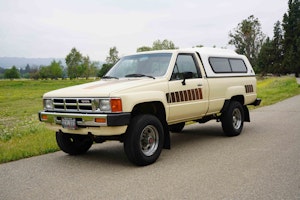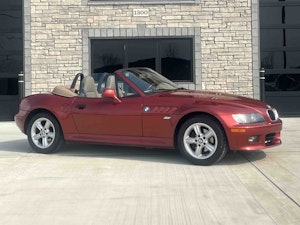Media | Articles
Push-button start: An old-school solution reimagined for the modern age
Want a cup of coffee? It’s easy as popping a k-cup into your Keurig and hitting a button. It’ll take, maybe, a minute. Making a cup once required more effort—maybe 10 minutes when you add up grinding the beans, measuring it out into a filter, and waiting for the water to heat up and for the coffee to then brew. That may not seem like a long time, but first thing in the morning, it’s an eternity compared to today’s convenience.
Most new cars operate today with a push-button starter, which requires that a key fob be in proximity for the starter motor to activate. We all remember the key-operated ignition that predates this technology, but until 1911, starting a gas-powered car meant inserting a hand crank into the front of the car and manually rotating it. It required substantial strength and a bit of luck.
If all went smoothly, the car started. If the crank kicked back, you could break your wrist or your arm, and the car would still be off. As cars grew larger, so did their engines, and in turn the effort needed to start them. Ever wonder why people in a bad mood are called cranky? Now you know.
Cadillac founder Henry Leland knew well the dangers of hand-crank starting. His friend Byron Carter (founder of the Cartercar, a company General Motors would eventually acquire) had died in 1908 after a stalled Cadillac’s crank slipped off and hit him in the face. He was badly injured and gangrene set in, eventually killing him.
In contrast, electric-powered cars of the era had captured a third of the market for one simple reason: they started with a lever or the flip of a switch. Why couldn’t starting a gas-powered car be that simple, and not carry the risk of maiming or death?
Marketplace
Buy and sell classics with confidence
20180109221353)
In 1910, Leland turned to Charles Kettering of the Dayton Engineering Laboratories Company in Dayton, Ohio, to create a mechanical starter that would simplify engine starts.
“We had the idea right from the start that with the right kind of battery, it ought to be possible to design a mechanism that would turn the engine over with electric power,” Kettering told the Dayton Daily News in 1923.
Kettering found a solution in an idea that occurred to him while developing the first electric cash register at National Cash Register in 1904. NCR wanted to sell one, but feared the electric motor required to crank the register would have to be as big as the register itself. Kettering realized that cranking the register happened intermittently with each transaction, not continuously. So the motor has to be only substantial enough to briefly handle the large power flow; after each transaction the motor could cool down. This led to NCR’s successful launch of the first electric cash register.
The same insight proved true for a starter motor. The electric motor just needed to be large and powerful enough to start the engine rather than continuously run, and once the engine started, the electric motor needed much less power for running the generator that charged the battery.
“Once we got that worked out, the rest came pretty easily,” Kettering said.
Kettering delivered the starter on Feb. 17, 1911. Commercial production began in August and was introduced on the 1912 Cadillac. By the time Kettering was granted a patent in 1915, 98 percent of production cars used the system, with the exception of Ford.
20180109221034)
Starter buttons were mounted on the instrument panel or floor, depending on model, until 1949, when Chrysler replaced the starter button with a key starter switch. Inserting a key and turning it beyond the “on” position started the car. This proved to be a safety innovation, since the previously-used starter button made it easy for children to inadvertently start the car while it was still in gear.
The key starter remained the only way to start a car until 1998, when Mercedes-Benz introduced “Keyless Go” on the fourth-generation S-Class. Building on the remote fobs used industry wide to lock unlock cars since 1983, it used technology developed by Siemens. Keyless Go allowed drivers to walk up to their locked car, open it by tugging on the door handle, get in, and push a button to start the car. Full circle.
It may seem like magic, but infrared technology and software make it work. The car’s key fob transmits a randomly generated frequency to your car, and that code is stored in your car, not within the fob. (That means a thief would have to break into your car and get the code in order to open the door, which makes no sense). The exact code frequency changes each time you use the key fob, and each code is encrypted, making the system difficult (although not impossible) to hack.
So even if the button seems like old school, the technology behind it is anything but. As the song goes, “Meet the new boss, same as the old boss.”
20180109221559)
20180109221409)









